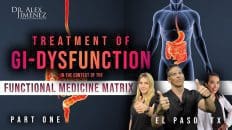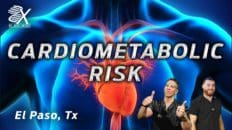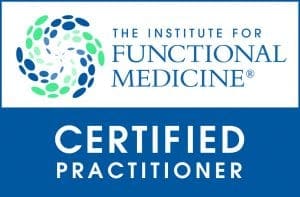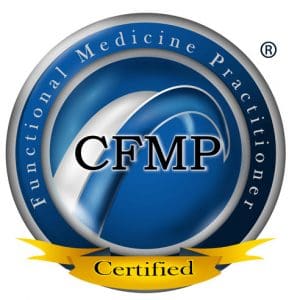Once again, traditional Chinese medicine and herbal medicine are coming back to treat chronic conditions’ underlying cause potentially. Consequently, Chelidonium majus L., commonly known as chelidonine, from the Papaveraceae family, and its function has been studied in depth. Chelidonium majus medical applications are multiple and include ulcer treatment, cancer, oral infection, liver disorders, asthma, and liver disorders.
Chelidonium majus
It is a well-known medicinal herb, mainly distributed in Asia and Northern Africa. It was widely used in Chinese herbal medicine due to its wide array of clinical applications. Nowadays, alternative medicine and homeopathy use specific bioactive compounds derives from Chelidonium majus to treat gastric cancer, skin disorders, oral infection, and general pain. Besides, ho
Once again, traditional Chinese medicine and herbal medicine are coming back to treat chronic conditions’ underlying cause potentially. Consequently, Chelidonium majus L., commonly known as chelidonine, from the Papaveraceae family, and its function has been studied in depth. Chelidonium majus medical applications are multiple and include ulcer treatment, cancer, oral infection, liver disorders, asthma, and liver disorders.
Table of Contents
Chelidonium majus
It is a well-known medicinal herb, mainly distributed in Asia and Northern Africa. It was widely used in Chinese herbal medicine due to its wide array of clinical applications. Nowadays, alternative medicine and homeopathy use specific bioactive compounds derives from Chelidonium majus to treat gastric cancer, skin disorders, oral infection, and general pain. Besides, homeopathic medicine uses ultra-high dilutions of C. majus against liver disorders.
Besides this, different parts of the Chelidonium plant are used as part of different therapies. For example, the leaves extract, flower, and root serve as a pancreatic digestive enzyme stimulator. Therefore, it is commonly used to treat dyspepsia, irritable bowel syndrome, and biliary disorders. On the other hand, Chinese herbal medicine has different respiratory conditions such as chronic bronchitis, asthma, and cough. Also, the use of Chelidonium majus as a treatment for blood stasis, ascites, edema, gallstones, jaundice, and gallbladder pain has been reported in Chinese herbal medicine.
Indeed, this medicinal herb’s application seems to be endless, and it is believed that this is associated with a wide range of phytochemical constituents. So far, 70 different bioactive compounds have been extracted from C. majus. Also, 24 essential macro-and microelements are part of the constituents of chelidonine.
| C. majus phytochemical constituents | ||
| α-homochelidonine | norchelidonine | oxychelidonine |
| 10-hydroxychelidonine | 10- hydroxyhomochelidonine | chelerythrine |
| di-hydro chelerythrine | norchelerythrine | 8- hydroxydihydrochelerythrine |
| 8- acetonyldihydrochelerythrine | 6- methoxy-dihydro chelerythrine | nitidine |
| dihydropyridine | oxynitidine | sanguinarine |
| dihydrosanguinarine | norsanguinarine | oxysanguinarine |
| N-dimethyl-9,10-dihydroxysanguinarine | 8-hydroxydihydrosanguinarine | 6-acetonyl-5,6- dihydrosanguinarine |
| 6-methoxydihydrosanguinarine | methyl 2′-(7,8-dihydrosanguinarine-8-yl) acetate | chelelutine |
| dihydrochelelutine | chelerubine | dihydrochelerubin |
| chelamine | chelidimerine | chelamidine |
| angoline | macarpine | Isoquinolines: noroxyhydrastinine and turkiyenine |
| Protopines: protopine and α-allocryptopine | Protoberberines: canadine, stylopine, corysamine, berberine, dihydroberberine, coptisine, dihydrocoptisine, and 8-oxycoptisine | Aporphines: magnoflorine, corydine, and norcorydine |
| quinolisidine | aromatic and aliphatic acids | chelidonic acid |
| caffeic acid | ferulic acid | pcoumaric acid |
| citric acid | malic acid | succinic acid |
| gentisic acid | p-hydroxybenzoic acid | nicotinic acid |
| Phytosterols: αspinasterol and ergosterol, | Flavonoids: rutin, quercetin, and kaempferol | didehydrochelidonine |
C. majus clinical application
Pain is a common symptom encountered by many clinicians in their practice. Furthermore, pain treatment varies depending on the type and region of pain. Ultimately it is defused by pharmacotherapy. However, C. majus and its anti-inflammatory results have been accepted as a pain reliever. The intervention with botanical herbs, such as chelidonine, is essential to eliminate drug interactions and significant side effects.
A recent study aimed to investigate the analgesic effects, anti-inflammatory activity, and locomotor improvement in injured rats with the supplementation of C. majus. This experiment was performed on Wistar rats, separated into three groups: the first treated with 200mg/kg C. majus, the second one with 5mg/kg of morphine, and the third treated with diclofenac 50mg/kg. Afterward, those three groups were subjected to three different pain/inflammation stimuli: locomotor activity, hot plate test at 48 ±2°C, and skin inflammation (carrageenan-induced paw edema).
Furthermore, the results concluded that C. majus did not affect the locomotor activity in rats. However, those rats treated with morphine showed an inhibitory effect against the locomotor activity. This showed an increased association with locomotor disparities in patients who consume morphine and how herbal supplementation can reduce this unwanted secondary effect.
Inflammation and C. majus
The inflammatory response was controlled by C. majus with a significant difference when compared to diclofenac. In fact, these results were stated after the carrageenan-induced paw edema test and the determination of reduced IL-6 and IL- concentrations.
Regardless of these conclusions, additional information reveals that c. majus plays an inhibitory role on the Nf-kB pathway. Consequently, this interaction reflects in a reduced TNF-a and nitric oxide production.
Also, studies show that the antarthritic action of C. majus is dose-dependent. In a study, supplementation of c. majus in doses 4, 40, 400 mg/kg/day] suppressed the progression of collagen-induced arthritis in mice, causing the reduction in the secretion of TNF-α, IL-6, IFN-γ, B cells, γδ T cells (in spleen), an increased proportion of CD4+CD25+ regulatory T cells in vivo as well as a decrease in the immunoglobulins IgG and IgM (rheumatoid arthritis factors) in the serum.
The hepatoprotective effects of c. majus is widely reported, but most of these studies have been studied in rat models. The main hypothesis behind its use as a hepatoprotective agent is related to its choleretic and deobstruent action. Consequently, this herb’s supplementation has proven to protect against carbon tetrachloride toxicity, reduced the number of necrotic cells, and bilirubin concentrations, and transaminase activity.
Traditional concepts:
We have to take into account that C. majus studies and applications started many thousands of years ago. Since then, a lot in medicine has changed. Traditional Chinese medicine hypothesized that the anticancer action of C. majus came from blood stasis elimination, inhibition of pathogenic heat, and static phlegm. According to Chinese Medicine, these three factors were believed to be the principal causes of all cancer.
However, the time has changed, and maybe we have different names for the same conditions. Adding to this, new studies have associated the elimination of blood stasis (antithrombotic, anti-inflammatory effect) and clearing the pathogenic heat (anti-inflammatory effect), and preventing an accumulation of body fluids.
C. majus, weight loss, and toxicity
Overweight and obesity are two major comorbidities associated with a pro-inflammatory state. Herbal medicine for weight loss has been previously reported, and most of the time is associated with liver toxicity. This is the case of C. majus. It is important to know that there exist reported cases of hepatotoxicity due to C. majus and the combination of other herbal species. This proves that supplementation should come through professionals’ advice and with a prior evaluation of body composition analysis.
It is amazing to be able to go through all of the new information about the clinical applications of many traditional herbs and find a relation between traditional medicine and new alternatives to treat chronic conditions. The ample information regarding the hepatoprotective, anti-tumor, antioxidant, and anti-inflammatory benefits provided by C. majus show that botanical agents are essential for the treatment of the “new world†conditions.
The most common way to introduce C. majus into your diet is with tea. I like this because is simple yet powerful, without the potential to be toxic. The best recommendation I could provide is to visit your care provider before consuming herbal therapies. – Ana Paola RodrÃguez Arciniega. MS
References
Maji, Amal K., and Pratim Banerji. “Chelidonium majus L.(Greater celandine)–a review on its phytochemical and therapeutic perspectives.” International Journal of Herbal medicine 3.1 (2015): 10-27.
MikoÅ‚ajczak, PrzemysÅ‚aw Åukasz et al. “Evaluation of anti-inflammatory and analgesic activities of extracts from herb of Chelidonium majus L.â€Â Central-European journal of immunology vol. 40,4 (2015): 400-10. doi:10.5114/ceji.2015.54607
Maji, Amal K., and Pratim Banerji. “Chelidonium majus L.(Greater celandine)–a review on its phytochemical and therapeutic perspectives.” International Journal of Herbal medicine 3.1 (2015): 10-27.
Tarantino, Giovanni et al. “Drug-induced liver injury due to “natural products” used for weight loss: a case report.â€Â World journal of gastroenterology vol. 15,19 (2009): 2414-7. doi:10.3748/wjg.15.2414
Additional Online Links & Resources (Available 24/7)


Online Appointments or Consultations:Â bit.ly/Book-Online-Appointment
Online Physical Injury / Accident Intake Form: bit.ly/Fill-Out-Your-Online-History
Online Functional Medicine Assessment: bit.ly/functionmed
Disclaimer
The information herein is not intended to replace a one-on-one relationship with a qualified health care professional, licensed physician, and is not medical advice. We encourage you to make your own health care decisions based on your research and partnership with a qualified health care professional. Our information scope is limited to chiropractic, musculoskeletal, physical medicines, wellness, sensitive health issues, functional medicine articles, topics, and discussions. We provide and present clinical collaboration with specialists from a wide array of disciplines. Each specialist is governed by their professional scope of practice and their jurisdiction of licensure. We use functional health & wellness protocols to treat and support care for the musculoskeletal system’s injuries or disorders. Our videos, posts, topics, subjects, and insights cover clinical matters, issues, and topics that relate and support, directly or indirectly, our clinical scope of practice.* Our office has made a reasonable attempt to provide supportive citations and has identified the relevant research study or studies supporting our posts. We provide copies of supporting research studies available to regulatory boards and the public upon request. We understand that we cover matters that require an additional explanation of how it may assist in a particular care plan or treatment protocol; therefore, to further discuss the subject matter above, please feel free to ask Dr. Alex Jimenez or contact us at 915-850-0900.  Read More…
Dr. Alex Jimenez DC, MSACP, CCST, IFMCP*, CIFM*, CTG*
email:Â coach@elpasofunctionalmedicine.com
phone: 915-850-0900
Licensed in Texas & New Mexico
General Disclaimer
Professional Scope of Practice *
The information herein on "Detox Therapy with Chelidonium majus L." is not intended to replace a one-on-one relationship with a qualified health care professional or licensed physician and is not medical advice. We encourage you to make healthcare decisions based on your research and partnership with a qualified healthcare professional.
Blog Information & Scope Discussions
Our information scope is limited to Chiropractic, musculoskeletal, physical medicines, wellness, contributing etiological viscerosomatic disturbances within clinical presentations, associated somatovisceral reflex clinical dynamics, subluxation complexes, sensitive health issues, and/or functional medicine articles, topics, and discussions.
We provide and present clinical collaboration with specialists from various disciplines. Each specialist is governed by their professional scope of practice and their jurisdiction of licensure. We use functional health & wellness protocols to treat and support care for the injuries or disorders of the musculoskeletal system.
Our videos, posts, topics, subjects, and insights cover clinical matters, issues, and topics that relate to and directly or indirectly support our clinical scope of practice.*
Our office has reasonably attempted to provide supportive citations and has identified the relevant research study or studies supporting our posts. We provide copies of supporting research studies available to regulatory boards and the public upon request.
We understand that we cover matters that require an additional explanation of how it may assist in a particular care plan or treatment protocol; therefore, to further discuss the subject matter above, please feel free to ask Dr. Alex Jimenez, DC, or contact us at 915-850-0900.
We are here to help you and your family.
Blessings
Dr. Alex Jimenez DC, MSACP, RN*, CCST, IFMCP*, CIFM*, ATN*
email: coach@elpasofunctionalmedicine.com
Licensed as a Doctor of Chiropractic (DC) in Texas & New Mexico*
Texas DC License # TX5807, New Mexico DC License # NM-DC2182
Licensed as a Registered Nurse (RN*) in Florida
Florida License RN License # RN9617241 (Control No. 3558029)
Compact Status: Multi-State License: Authorized to Practice in 40 States*
Presently Matriculated: ICHS: MSN* FNP (Family Nurse Practitioner Program)
Dr. Alex Jimenez DC, MSACP, RN* CIFM*, IFMCP*, ATN*, CCST
My Digital Business Card




















